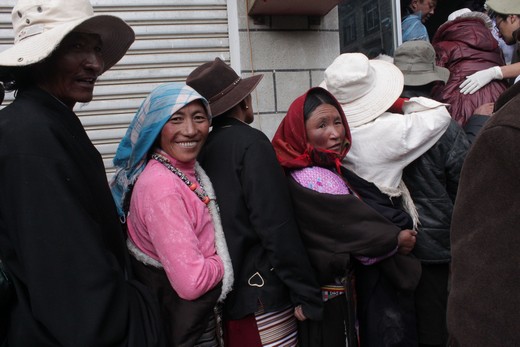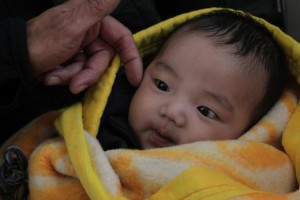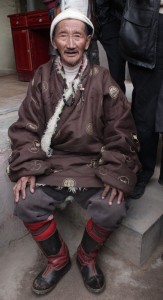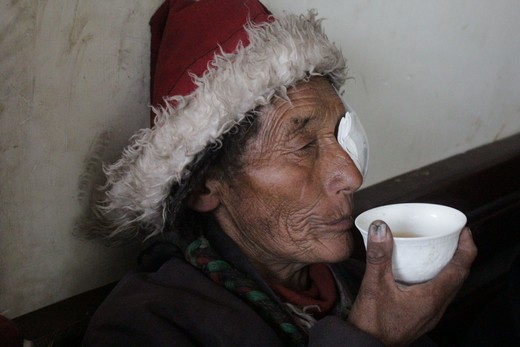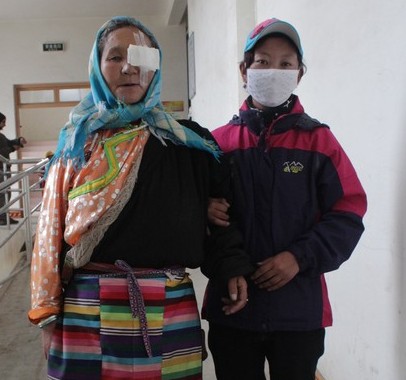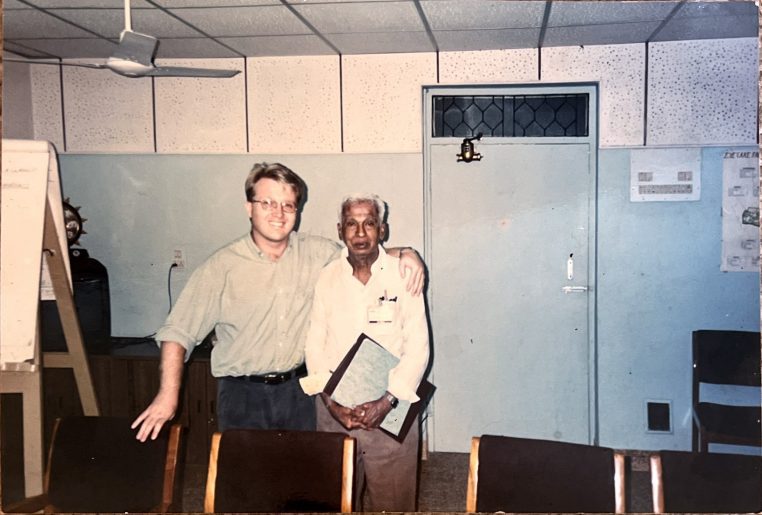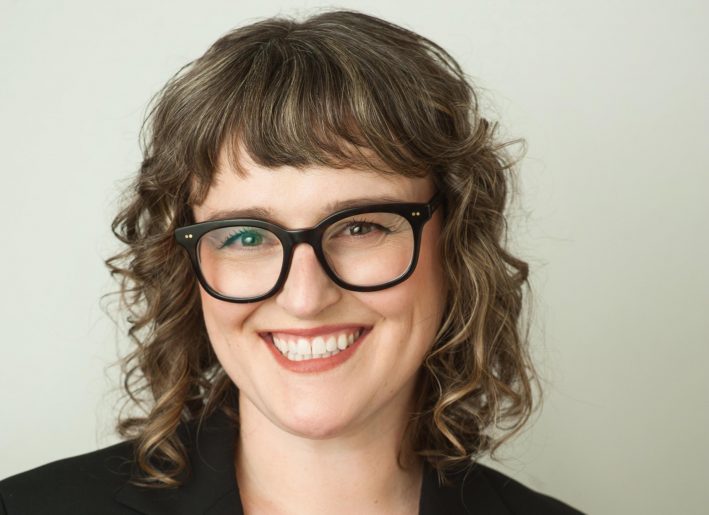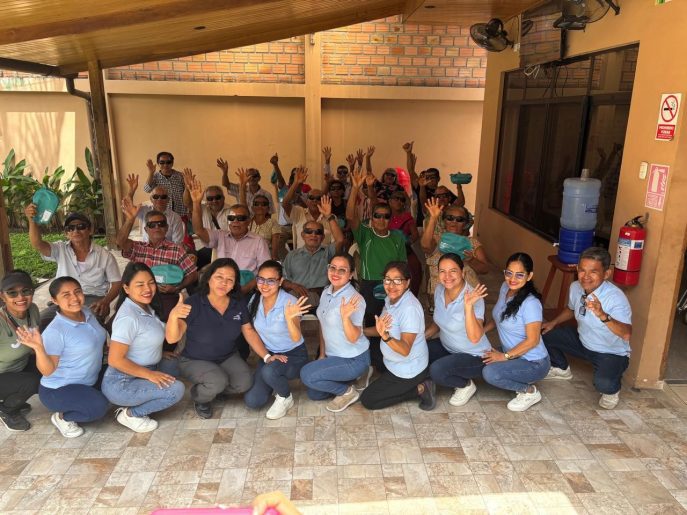A report for all the donors that made it possible
By Susan Erdmann, Seva Canada Board Member, volunteer and legacy donor
Two years ago, I made a commitment to raise $15,000 for an Seva eye camp in Tibet, an eye camp that would reach those in need in remote areas of Tibet – those who would not otherwise have the means or the opportunity to have their eyesight restored or blindness prevented. All of you responded to my request for a donation and all of you made possible the successful eye camp I just witnessed. Here’s a snapshot of my experience of your eye camp in Nakchu, Tibet.
We journeyed across the Tibetan plateau by road from Dartsedo, where Seva’s first designated eye hospital in the region had recently opened. It took us about 2 weeks driving almost every day, seeing amazing scenery, wonderful people, beautiful monasteries, interesting towns and animals from wild yaks, foxes, horses, and antelopes to camels. We travelled from tree-filled valleys to high mountain passes at average elevations of 12,000-15,000 feet. We stayed sometimes in very basic accommodations, ate good Chinese or Tibetan food, had a few warm days and a lot of cold ones. But we reached our goal – Nakchu – where the eye camp was to be held.
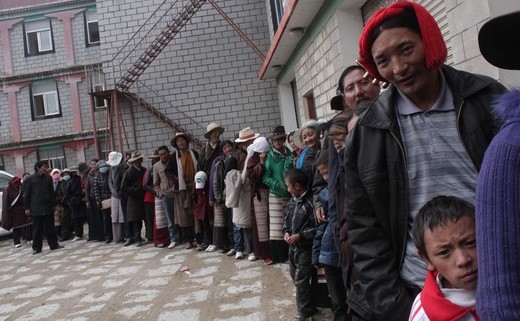
When we arrived in Nakchu, north of Lhasa and central to a very large nomadic area, the day was grey, the city was grey, the hotel was grey and all of it at 15,000 feet and cold – bitter cold. But Nakchu was a good location because it could be reached by many people in the surrounding area but still sometimes many kilometers away.
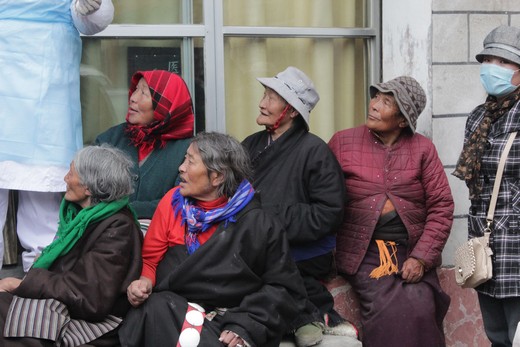 When our new guide, Wanchuk, saw that we were to stay 4 nights and wanted to visit Menzikhang Hospital, (Tibetan traditional hospital) he wondered first why anyone would want to spend that much time in Nakchu and why a visit to a traditional Tibetan hospital… so he visited Menzikhang, found out about the eye camp that was to be held there and took the initiative to arrange for approval from the authorities for our visit there… all this on his own. I was impressed.
When our new guide, Wanchuk, saw that we were to stay 4 nights and wanted to visit Menzikhang Hospital, (Tibetan traditional hospital) he wondered first why anyone would want to spend that much time in Nakchu and why a visit to a traditional Tibetan hospital… so he visited Menzikhang, found out about the eye camp that was to be held there and took the initiative to arrange for approval from the authorities for our visit there… all this on his own. I was impressed.
The next morning we would visit Menzikhang with the approval of the local authorities allowing us to be in the hospital, talking to patients and taking pictures. Having permission was a relief for when I departed Vancouver, I didn’t know if I would even be able to visit the eye camp.
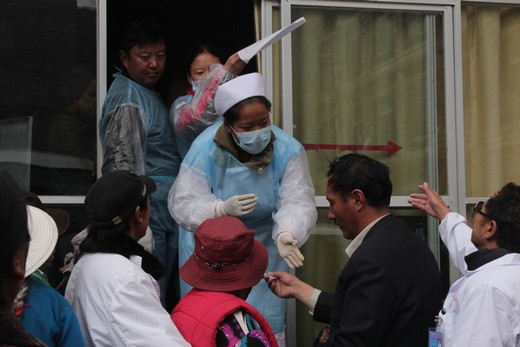 When we arrived and drove into the hospital courtyard it was already crowded with people lined up for screening. We were told there were 200 people waiting and the day before the eye camp started, they had already done some 80 operations.
When we arrived and drove into the hospital courtyard it was already crowded with people lined up for screening. We were told there were 200 people waiting and the day before the eye camp started, they had already done some 80 operations.
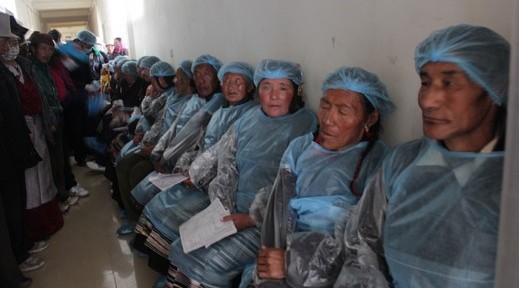 The patients’ first stop was the screening room. If the ophthalmic assistant determined they needed to have their eye ‘opened’ (have cataract surgery) they would proceed from there to the second storey of the hospital across the courtyard. There they were gowned up, had drops put in their eyes to dilate their pupils and wait to be called in for the anaesthetic and then the operation. This area is where I spent most of my time, interviewing patients, finding out where they came from, how they got there, how long they had had cataracts (which was the cause of the blindness) how it had affected their lives, how they heard about the eye camp and how having their eye ‘opened’ (the cataract removed and sight restored… the Tibetans call the doctors ‘eye openers”) would now change their lives.
The patients’ first stop was the screening room. If the ophthalmic assistant determined they needed to have their eye ‘opened’ (have cataract surgery) they would proceed from there to the second storey of the hospital across the courtyard. There they were gowned up, had drops put in their eyes to dilate their pupils and wait to be called in for the anaesthetic and then the operation. This area is where I spent most of my time, interviewing patients, finding out where they came from, how they got there, how long they had had cataracts (which was the cause of the blindness) how it had affected their lives, how they heard about the eye camp and how having their eye ‘opened’ (the cataract removed and sight restored… the Tibetans call the doctors ‘eye openers”) would now change their lives.
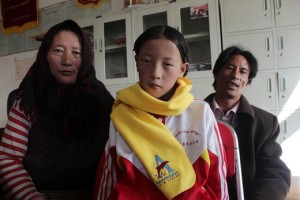
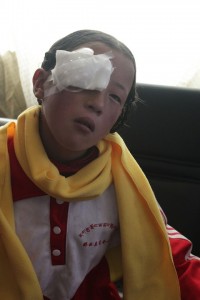 Two stories stand out… one is of an 11-year-old girl, a nomad, who came to the camp with her mother and uncle. She could barely see out of one eye, but they felt they could operate on the other. She said she didn’t want to go back to school because she got beaten and was behind… beaten because she didn’t learn her lessons… but how could she learn lessons if she couldn’t see? There is sometimes little sympathy for those with poor sight or even inquiry that lack of vision might be the cause of the inability to learn. I felt so deeply for her and her worried mother. Her uncle was also very concerned, which showed again the deep family commitment the Tibetans have. She had the operation which took quite a while. We saw her after with a smiling uncle, much relieved and the mother who continued to look worried. She said now she wanted to go back to school. She wore an Aquaventure (one of the sponsors of the eye camp) scarf I had given her throughout – and hopefully that will stay with her along with the hope of better sight and a better life.
Two stories stand out… one is of an 11-year-old girl, a nomad, who came to the camp with her mother and uncle. She could barely see out of one eye, but they felt they could operate on the other. She said she didn’t want to go back to school because she got beaten and was behind… beaten because she didn’t learn her lessons… but how could she learn lessons if she couldn’t see? There is sometimes little sympathy for those with poor sight or even inquiry that lack of vision might be the cause of the inability to learn. I felt so deeply for her and her worried mother. Her uncle was also very concerned, which showed again the deep family commitment the Tibetans have. She had the operation which took quite a while. We saw her after with a smiling uncle, much relieved and the mother who continued to look worried. She said now she wanted to go back to school. She wore an Aquaventure (one of the sponsors of the eye camp) scarf I had given her throughout – and hopefully that will stay with her along with the hope of better sight and a better life.
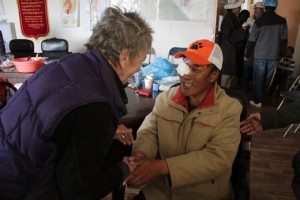
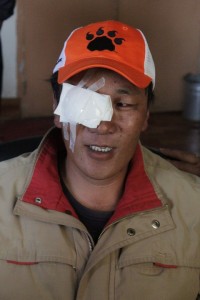 The other patient whose story I want to tell was a man in his forties. We saw him before and interviewed him after. He was very pleasant and didn’t seem concerned about the operation, only happy to be there getting help. His daughter was there with him. She had a government job in a carpet factory and paid his expenses to get to the hospital as he traveled some 80 kilometers. He is a nomad and has yaks and sheep which he herds and, like all nomads, he must be ever vigilant for wild animals after the herd. After the operation he answered my questions and then he said, “I have a happy life. A life without sight is an empty life. I have my life back because of you. Thank you.”
The other patient whose story I want to tell was a man in his forties. We saw him before and interviewed him after. He was very pleasant and didn’t seem concerned about the operation, only happy to be there getting help. His daughter was there with him. She had a government job in a carpet factory and paid his expenses to get to the hospital as he traveled some 80 kilometers. He is a nomad and has yaks and sheep which he herds and, like all nomads, he must be ever vigilant for wild animals after the herd. After the operation he answered my questions and then he said, “I have a happy life. A life without sight is an empty life. I have my life back because of you. Thank you.”
At lunch, Dr. Sonam from the Seva office and one of the doctors operating told me he thought it best if we didn’t stay. There seemed to be a lot of issues with foreigners being there so after lunch I decided we would get as much information as possible in interviews and pictures and then leave. My last interview was the nomad I quoted above… a fitting close.
Nakchu Prefecture is located in the north of Tibet and encompasses 1/3 of the region’s total land. It is a nomadic area with an average elevation of 4,500 m (15,000 feet) and a total population of 480,000.The Qinghai-Tibet highway and the railway cut across Nakchu Prefecture. The climate is harsh, dry and cool in summer and extremely cold in the winter. The average distance between township and prefecture is 250 kilometers.
The eye care team consisted of local eye care specialists invited from Nakchu, Chamdo and the Seva Tibet office in Lhasa. To reach the surgical eye camp, the team traveled 800 kilometers overland.
All who came to the eye camp were seen. Some were treated for infections, vision correction or advised on treatment for other conditions. The majority of those treated were given sight-restoring cataract surgeries.
Total surgeries 196 (of whom 110 were women or girls and the youngest patient was 11 years old.
Leaving after only one day was a disappointment, but I could see even in my brief one day there that the eye camp was a huge success and that once again people’s lives would be changed forever. Seva donors had made it possible for the people, who could not possibly afford the cost of the surgery, to see again. Knowing about this area, I feel even better that the camp was held there despite the difficulties in our getting there. While I could not show them the faces of their benefactors, they knew why they were able to get the help they needed and expressed their gratitude in words and smiles.
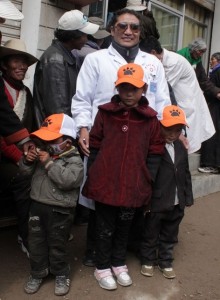
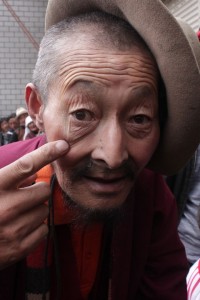 While all those who came to the Nakchu Eye camp were taken care of, some funds remained and will be used to purchase the medicines to be used at future eye camps.
While all those who came to the Nakchu Eye camp were taken care of, some funds remained and will be used to purchase the medicines to be used at future eye camps.
From all those who benefited from your compassionate hearts – and especially me
Thank you !
